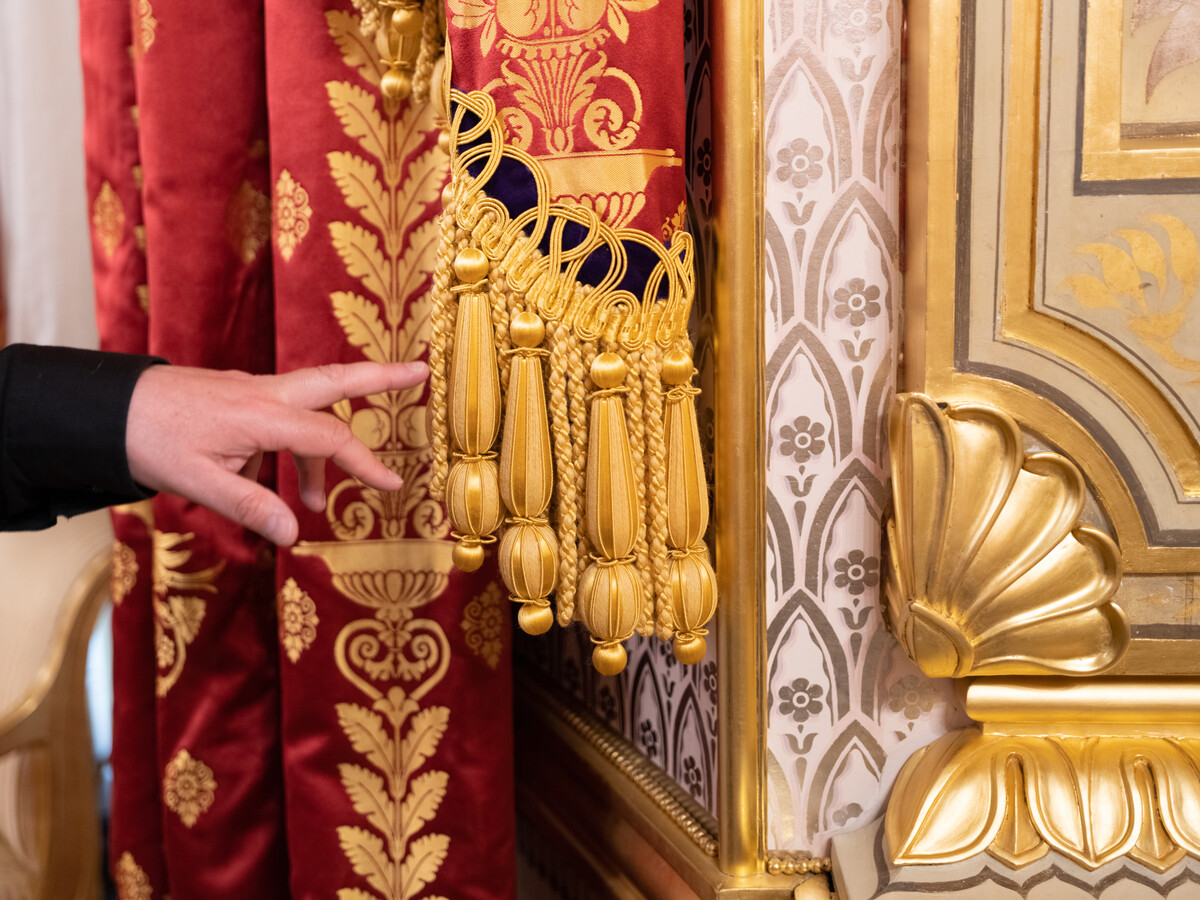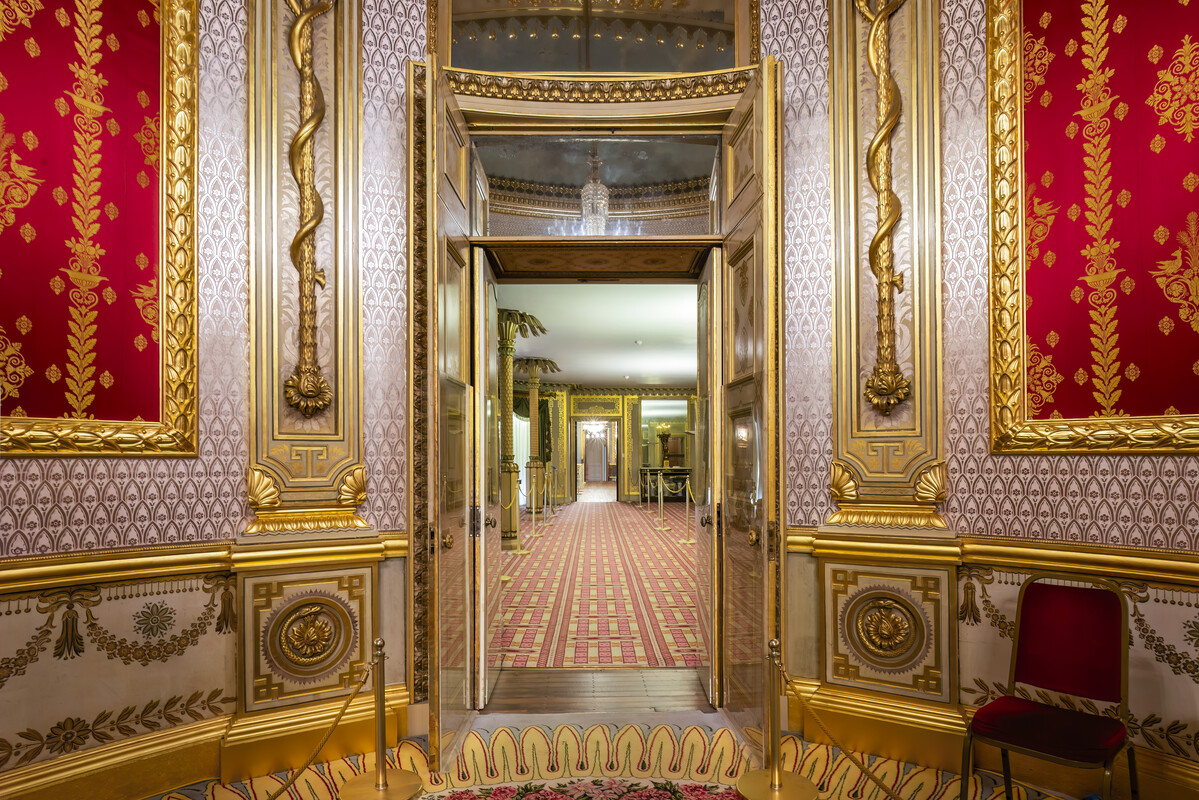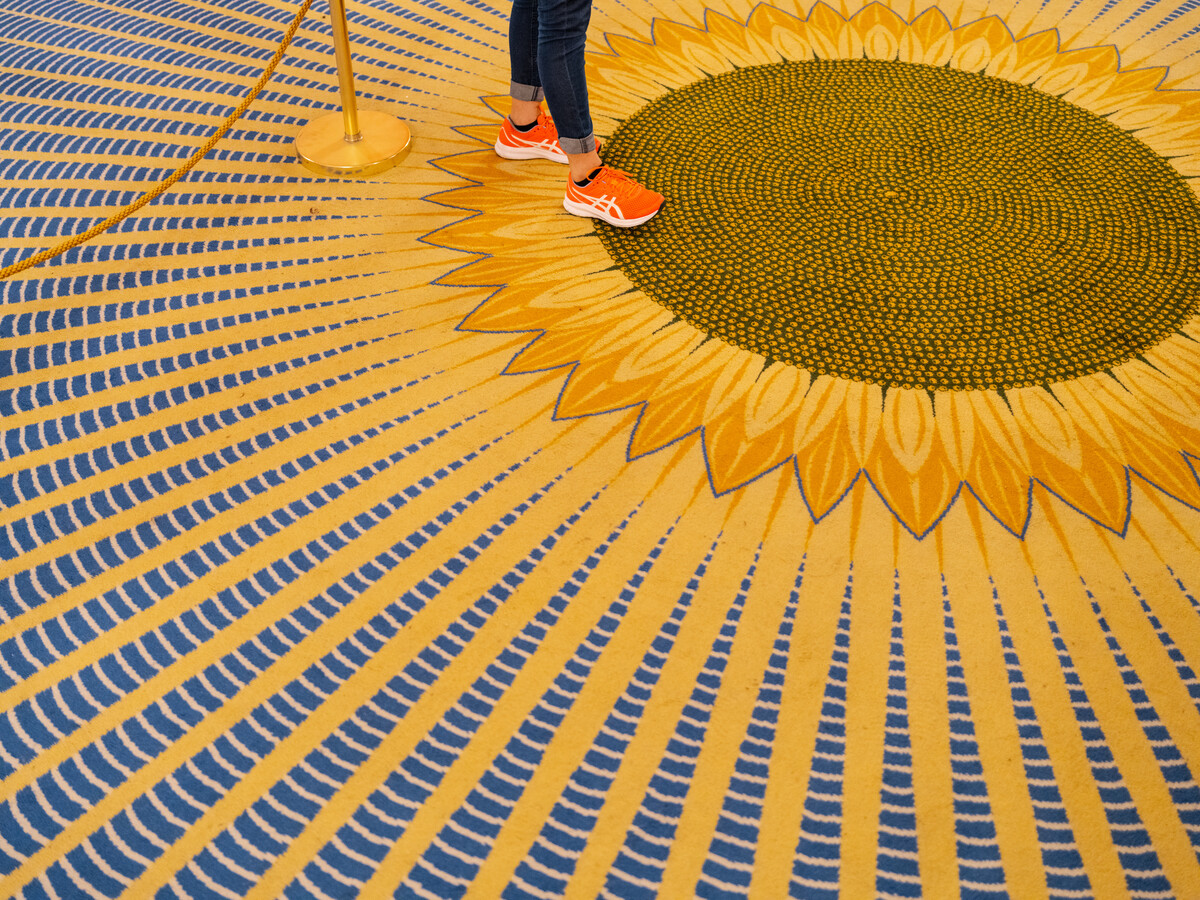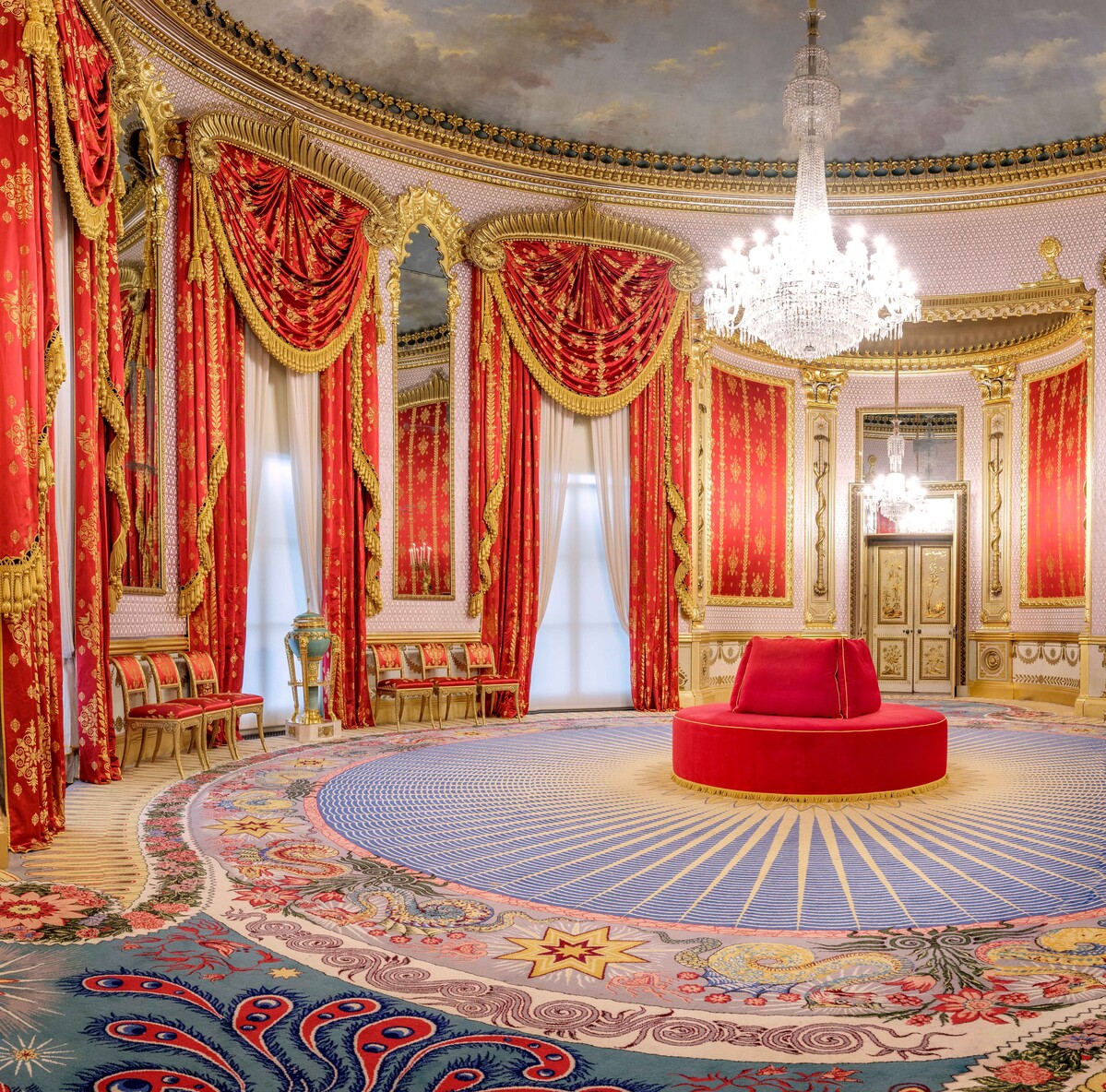
Saloon

The Saloon was designed to take your breath away. Restored to reflect its original brilliance, it combines bold primary colours with the glow of gold and platinum.
The Saloon is one of the oldest surviving parts of the Royal Pavilion and the grandest room in the palace. A formal reception room, this is where George would greet his guests before accompanying them to dinner in the Banqueting Room. It was designed to make an impression, and to reflect his status as King.

An authentic restoration
When Queen Victoria left the Pavilion in 1845, many of the Saloon’s opulent furnishings were stripped out and reused in other royal palaces. After a major restoration project, our conservators have recreated the brilliance of Robert Jones’ original decorative scheme, which was completed in 1823. We drew on existing historical sources, such as watercolour illustrations, bills and inventory lists, to ensure the restoration is as authentic as possible.
The interior that you see today is bold and regal, with dramatic colour combinations and visual detail. The silk wall panels and curtains are rich red and gold, with a pattern inspired by French decorators of the Napoleonic era. The luxurious woven carpet, made by the company that created the original, is just as vibrant. It is predominantly blue, a colour reflected in the sky painted on the domed ceiling and some of the Chinese vases displayed around the room. The central dome itself is supported by a cast-iron frame.
Reflective glory
More unusual in terms of colour is the use of silver in combination with gold. In his original scheme, Jones chose silver for the leaf and flower motifs on the pearl-white walls. Our conservators have opted for platinum leaf, applied painstakingly by hand, to recreate the impact of the original wall decoration – it reflects and shimmers in the same way as silver, but doesn’t tarnish.
The Saloon is rich in vivid imagery that appears elsewhere in the Pavilion, including dragons, sunflowers and lotus leaves. Look out, too, for a gilded snake eating its own tail, an ancient symbol of immortality.
